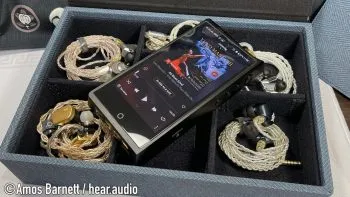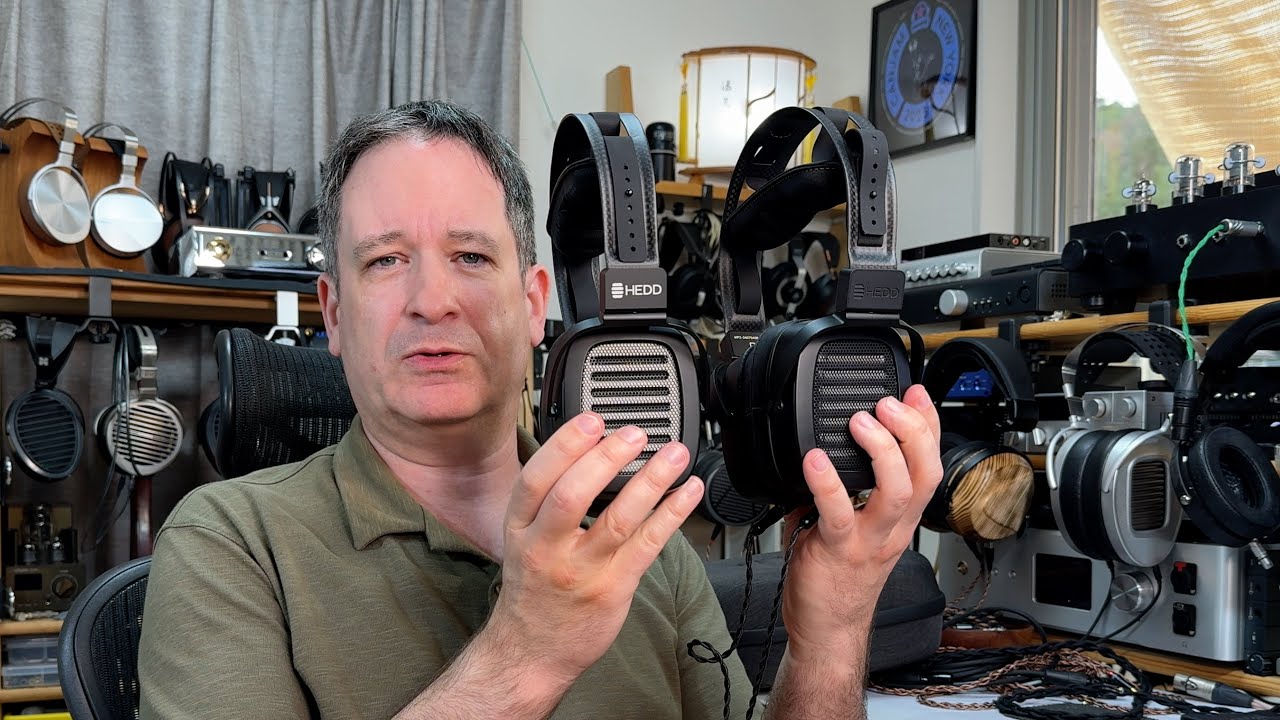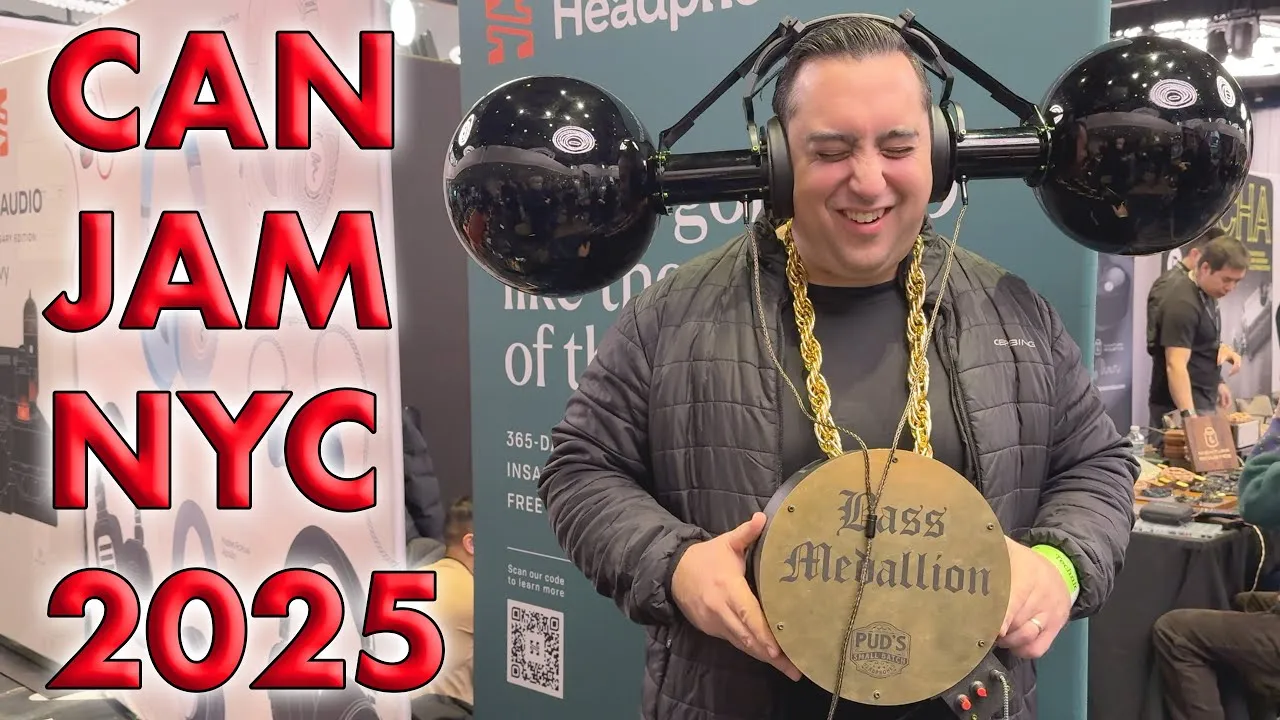I recall seeing the original N8 at one of the Tokyo FUJIYAAVIC headphone festivals some years ago. I thought that it looked pretty crazy. Listening with it, I quickly realised, upon hearing that slight “ping” that you get with such things, that it had a Korg Nutube inside.
Like many DAPs from China, it was somewhat low on features — no full Android or streaming, but only basic music playback. It was clearly for the hardcore listeners who cared about sound quality over everything else.
For people such as myself, being able to use Qobuz and other than the built-in player is important, as much of my music listening is managed via playlists of music I’ve discovered online, so it was a welcome announcement to hear that its replacement would have regular Android installed, albeit version 9.
The reason for Android 9 in particular is that the N8ii uses Hiby Music’s DTA system, that allows bit-perfect playback from software other than the built-in music player (though, at the time of writing, of all the software I tried, Roon alone would attempt to re-sample, rather than output bit-perfect, a problem it had on Android in general).
Externally, the N8ii drops a lot of the bling of the original and limits the gold colouring to the volume knob and socket surrounds. Input and output are all at the bottom, with 2-way USB, a 4.4mm and 3.5mm headphone outputs, 3.5mm line out, and an I2S digital output. S/PDIF output is also available via a special USB cable. 2.5mm output is possible via an included adaptor. Like previous Cayin players, unused pins in the USB-C connector are used for S/PDIF. Below the external controls, a single micro SD card slot is provided.
On the opposing side to the controls resides the one key feature to the N8ii: Two side-mounted Kore Nutubes. For the uninitiated, the Korg Nutube uses a modern version of vacuum tube display tech, but for audio use. Behaving like a regular single-ended triode tube, the Nutube doesn’t require the high voltages or a large heater current to run, but can be powered from a regular battery, exemplified by Korg’s own DIY amplifier which uses a single Nutube and runs of 2 1.5V AA batteries.
The lower power requirements allows the Nutube to be used in portable gear, the limitation being that they are physically quite large. Cayin, faced with finding a way to put two in a DAP, alongside a screen, battery and everything else, ended up putting them sideways. There was no way that the N8ii wasn’t going to end up being thick, so why not put them where they can be seen easily?
As far as noise goes, I didn’t hear any of the tube pinging that was occasionally slightly audible in the original N8, even if I tapped the chassis while the tubes were engaged.
Since tubes of any kind, new or old, do not last forever, the player will shut them off a few seconds after playback is paused or they are not selected for output. Engaging them during playback via the Android pull-down menu will show a 5-second countdown during which they are pre-heated before being seamlessly engaged, with no pause in the music.
The tubes themselves are rated for 30,000 hours of use, which should be more than plenty for the lifetime of the player.
Like some of the R6ii player modules, and the C9 amp, the N8ii includes options for Class A or AB output. However, the N8ii includes a “Power Plus” (P+) mode in Class AB, which increases the output current for full-sized headphones. This mode is only compatible with Class AB operation due to the amount of current draw required.
As well as the dedicated 3.5mm line output, the 4.4mm socket can be set to “LO” or line output mode. Both line outs use separate, dedicated circuits optimised for that purpose, rather than the headphone amplifier.
Both the line out and discrete headphone amplifier circuits have three gain settings, in headphone mode increasing output, and in line-out mode decreasing it. The highest of the line out settings is a standard 2V (SE) and 4V (balanced) set-up, with medium and low dropping those voltage for equipment that requires it.
The headphone amplifier offers up to 1200 mW at 16 Ohms, and 720 mW at 32 Ohms (in P+ mode) enough to comfortably drive full-sized headphones. Quoting a post by Z_Showmaster on Head-Fi (a distributor of Cayin products):
P/P+ adjusts operating voltage, bumping the voltage rails up. It is not a gain control – when you toggle P/P+, there is no increase to listening volume or loudness. Large dynamics become more confidently reproduced with P+, versus the softer, sweeter take that P gives you. You’ll be able to switch between the two modes for synergy with different IEMs and particularly headphones.
In single-ended mode, P+ swings go up to seven volts. The N8ii is a bridge-tied load player, and positive and negative phases both function as output. This in particular benefits the balanced P+ implementation to double in voltage swing, and go over 10 volts for a very confident presentation with bigger headphones.
Just remember, P/P+ is not a gain/loudness control. N8ii has a dedicated gain control for L, M and H.
4.4PO P: ±4.7V, 4.4PO P+: ±5.7V as rails. As a BTL player, both hot and cold output, we double swing to 9.4V on P, and 11.4V on P+. The C9 has +/-8.7V and that total upto 17.4V swing.
Most notably is the change in the N8ii from AKM to dual ROHM DACs. This had me very curious as to what subtle qualities these converters would infuse the sound with.
For convenience, I most often ran the N8ii as a DAC, using the USB input from an iFi Zen Stream, using Roon (which avoided the issue of bit-perfect playback which the Android version of Roon seems to have at present, as despite the bit-perfect DTA system, Roon forces output to to only 44.1/48kHz).
Plugging in USB when the N8ii is set to enable DAC mode by default results in an overlay that prevents access to everything, including the pull-down settings menu. I found that if I pulled it all the way down before plugging the USB cable in, it would stay there, and I was still able to change all the main settings.
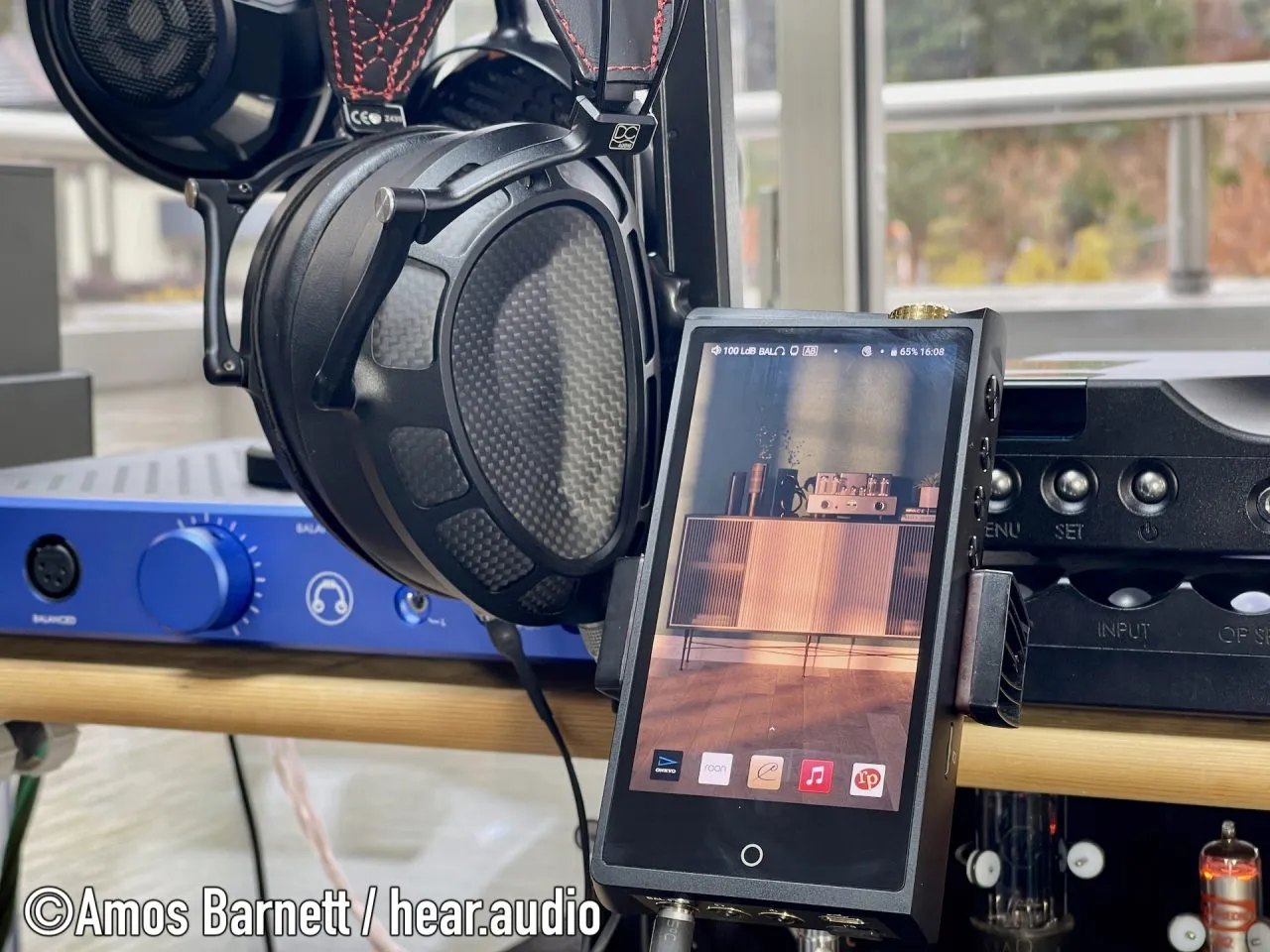
One of the best aspects of the upgrade to Android 9 is the move to similar Snapdragon 660-based hardware that you can find in the Hiby R6 2020 and FiiO M11 Plus. That means a fast-booting, snappy user interface on a larger, 1280×720 screen that will work with Youtube and multiple apps.
While I wouldn’t choose to multi-task on a device that I had bought for dedicated music use, at least you aren’t limited to using one function at a time, or just one music player.
In terms of software, the N8ii I received had the Hiby Music Player front and centre, with Cayin’s own variation (which has some of the Hiby-specific features removed) also included. As the Google Play store is installed, it is easy to download and install some of the common streaming apps, though I had to side-load Qobuz to use it, as the Play Store doesn’t show apps that aren’t listed as compatible with a device.
Listening Impressions
My general impression of the N8ii, sonically, was that it has a fairly “meaty” sound, with subtle changes depending on whether tube mode is engaged or not. The Korg Nutubes, as with the C9 amplifier, give a slightly more “musical” sound, which feels slightly wider and more characterful.
Without the tubes, the sound is a bit sharper and more even. Likewise, disengaging P+ mode while the DCA Stealths were plugged in seemed to weaken the bass a little, giving the feel of a slightly more “airy” sound. Most interestingly, I couldn’t discern a large difference at all between Class A and AB modes, likely because I was using IEMs most of the time, and Class AB mode may still not have been outputting enough power to slide out of Class A.
Lately I’ve been listening with the flagship IEMs from Audio Dream in Brazil, made by one of the supporters of my Youtube channel. With a dynamic driver and multiple Sonion EST drivers, they are pretty demanding, even for IEMs. Unfortunately I’d forgotten to ask that he sent a cable with a 4.4mm connector, so I had to make do with a 3.5mm one.
This gave me the opportunity to evaluate the performance of the single-ended output, however. In that, I was very pleased. Interestingly, I thought I could notice a slight difference between Class A and AB modes, with a touch more dynamics from the latter. More noticeable, however, was P versus P+ mode, which caused the sound to open up more, most noticeably in the treble.
I think it would have made more sense to just have a single option of Class A and P mode, and Class AB P+ mode for the greater dynamics.
Select IEM Impressions
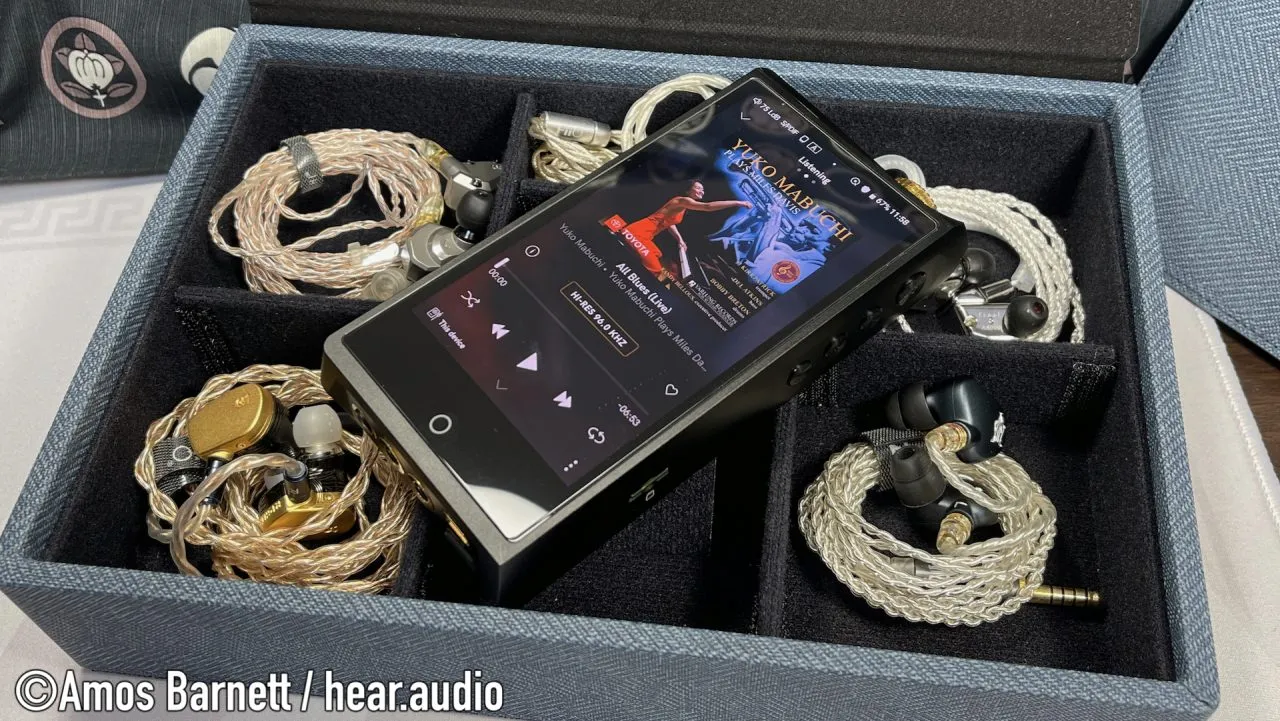
With the Campfire Audio Solaris (original) and a FiiO LC-RE cable, there was both fantastic punch in the bass, the N8ii making the most use of the dynamic driver. The warmer sound balances resulted in a nice full sound.
I thought I’d see how this translated with Final’s A8000. Initially, Fleetwood Mac’s Dreams was a bit piercing with the brighter IEMs. But Fair Weather from Other Lives off their Rituals album had the N8ii providing a pleasantly spacious sound with great bass in solid state mode.
Switching between P and P+ mode, the A8000 seems to become brighter with the greater power, and the overall sound felt a bit less refined, even if it did seem wider and more open, it came across as more forced.
It was tube mode at this point that added a touch more musicality, if the bright treble of the A8000s suggested that a bit of refinement was lost in the process.
Sofi Tukker’s Hey Lion, one of my bass delivery staples, was delivered with fantastic punch regardless of mode, and plenty of detail and nuance of the sound.
Switching to Ben Howard, I Forget Where We Were, there is a deep, low bass note that comes up occasionally in this track, and it was impressive how well that deep rumble came through.
Overall, I was most impressed at how the N8ii managed to deliver each part of the track — each instrument, on its own as it should be.
Comparisons With Other Products
At $3,499 USD it is right up there, competing squarely with the best from Astell&Kern, Chord, and is a fair bit more expensive than FiiO’s gigantic M17.
In generally terms, once you get above $1000 in the DAP world, you get decent full-size headphone driving ability. Above $2000 the value becomes debatable, with exotic components the norm — none the less in the N8ii.
The king of portable audio is arguably the Chord Hugo 2 and 2go combination. What you don’t get in having a screen is an insane degree of computing power programmed with the culmination of over 30 years of research, and enough output to drive even very sensitive speakers. Likewise a purity of sound that is in complete contrast to most tube-based designs.
Not surprisingly, the laws of physics wins out here, and the Hugo 2 and 2go combination gave yet more space and detail to the music, rather like how the Hugo TT2 does in comparison to the Hugo 2. The nuances of the waves at the opening of Follow Me Home by Dire Straights were readily more apparent, and the whole song, played back through the DCA Stealth with the “green” filter engaged, spread out all around my head.
The Hugo 2 also delivered the music in a way that I felt more emotionally inside me.
Still, I didn’t feel that the N8ii was put to shame. Like I sometimes prefer the more “solid” sound of the Hugo 2 to the TT2, especially listening to less well-recorded and mastered music, in a similar way, I appreciate the meaty sound from the N8ii, especially with the dynamics in P+ mode.
FiiO’s M17, not entirely unlike Chord, aims for technical fidelity primarily, exemplified by the choice of a THX 889-based amplifier. Interestingly, though it has ESS-based DACs, it delivers the sound so cleanly and smoothly, that I had not been aware, I would have guessed that they were AKM4499s!
Rather than the meaty sound of the N8ii, the M17 is smooth and more even, rather like what you get from a Topping D90 DAC hooked up to a THX amp. It has the added advantage of a desktop mode, enabled by connecting an included 12V power supply.
Not only does desktop mode give the M17 a boost in much the same way that the N8ii is boosted by P+ mode — the bass on headphones such as the DCA Stealth and other planar dynamic headphones filling out more, but, most importantly it gives the M17 a louder maximum volume for full-sized headphones. This was quite noticeable with the low-sensitivity, and subsequently difficult-to-drive DCA Stealth, which sounded weakened on the N8ii, compared to the greater dynamic delivery from the M17
As a desktop solution, the M17 is superior, though being the size and weight of 3-4 iPhone 12 Pro Max phones, is not something you’d really want to try and carry around as much place on a table somewhere.
However, for overall musicality, and taking that with you, the N8ii is slightly nicer, the warmer, meatier and more mellow sound. Musical depth and nuance was slightly better with the N8ii, the fantastic bass distinct from the clear mid-range, and each aspect of the sound presented more individually than with the M17, which tended to give all music the same tonality. That leaves the M17 being better for full-sized headphones when used as as desktop device, and the N8ii being the more musically satisfying with IEMs, and the Hugo 2 being the best of both in many respects.
Unfortunately I couldn’t compare it with the N6ii I had here previously as it was required by another reviewer. I did manage to briefly compare it with the C9. The C9 has both a more distinct change with the tube mode engaged, as well as between the Class A and Class AB modes. I didn’t find it added any significant benefit over the N8ii’s headphone driving ability, and with IEMs is entirely redundant, the N8ii providing essentially the same level of performance.
Conclusion
Overall, I reckon that Cayin fans will really love what they’ve managed to achieve with the N8ii. I wouldn’t be surprised if a lot of N6ii and C9 owners switch to the N8ii. The main negative is that it is quite a heavy device for carrying around. If the N8ii synergises best with your IEMs and listening tastes, and you must have a top DAP, it can be a fantastic “end game” portable device. However, if you’re willing to give up a feature or convenience or two, as well as only a bit of sound quality, there are other products which are arguably better value. The N8ii is for people who must have the best DAP of its kind, regardless of the cost.


